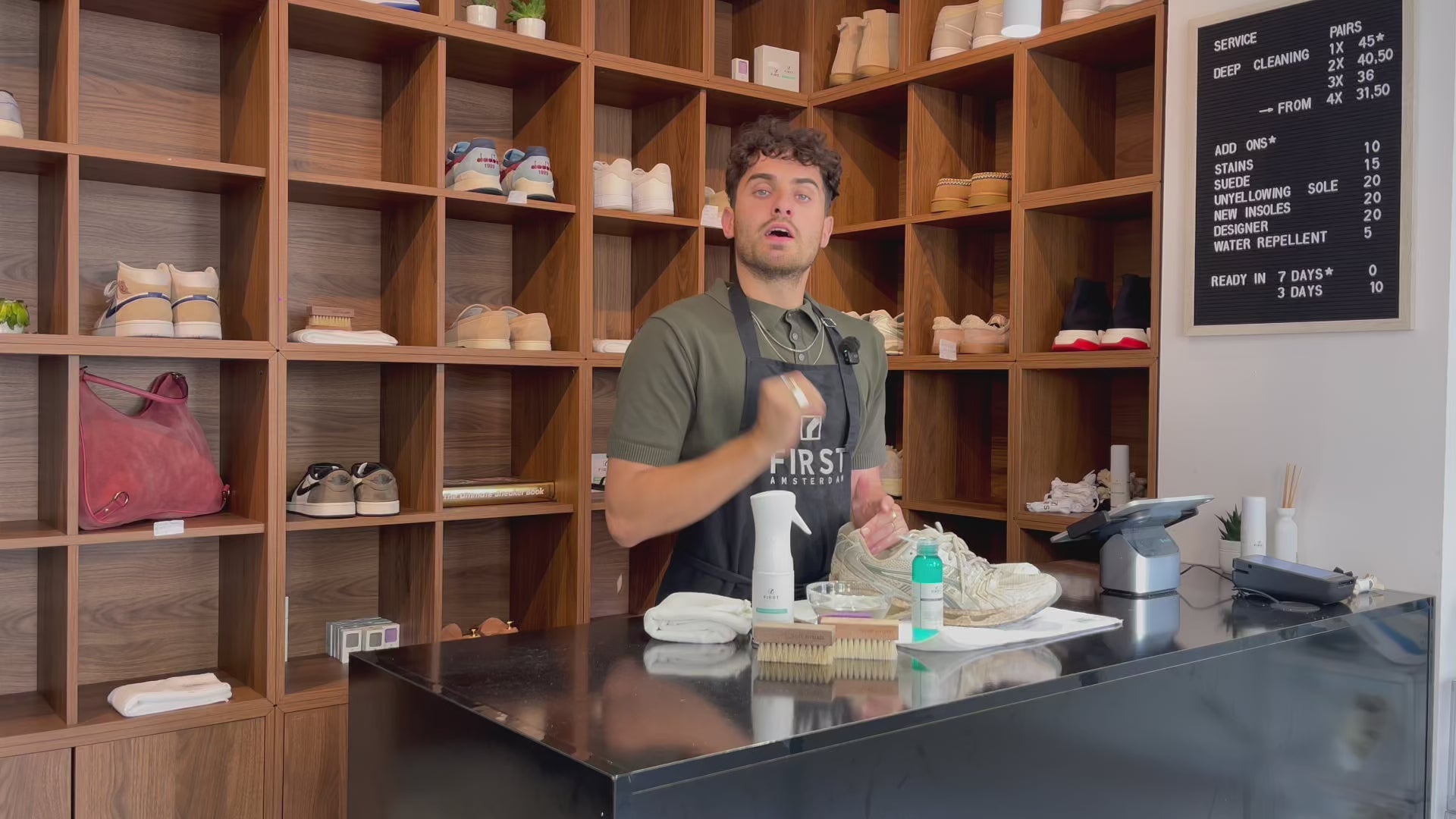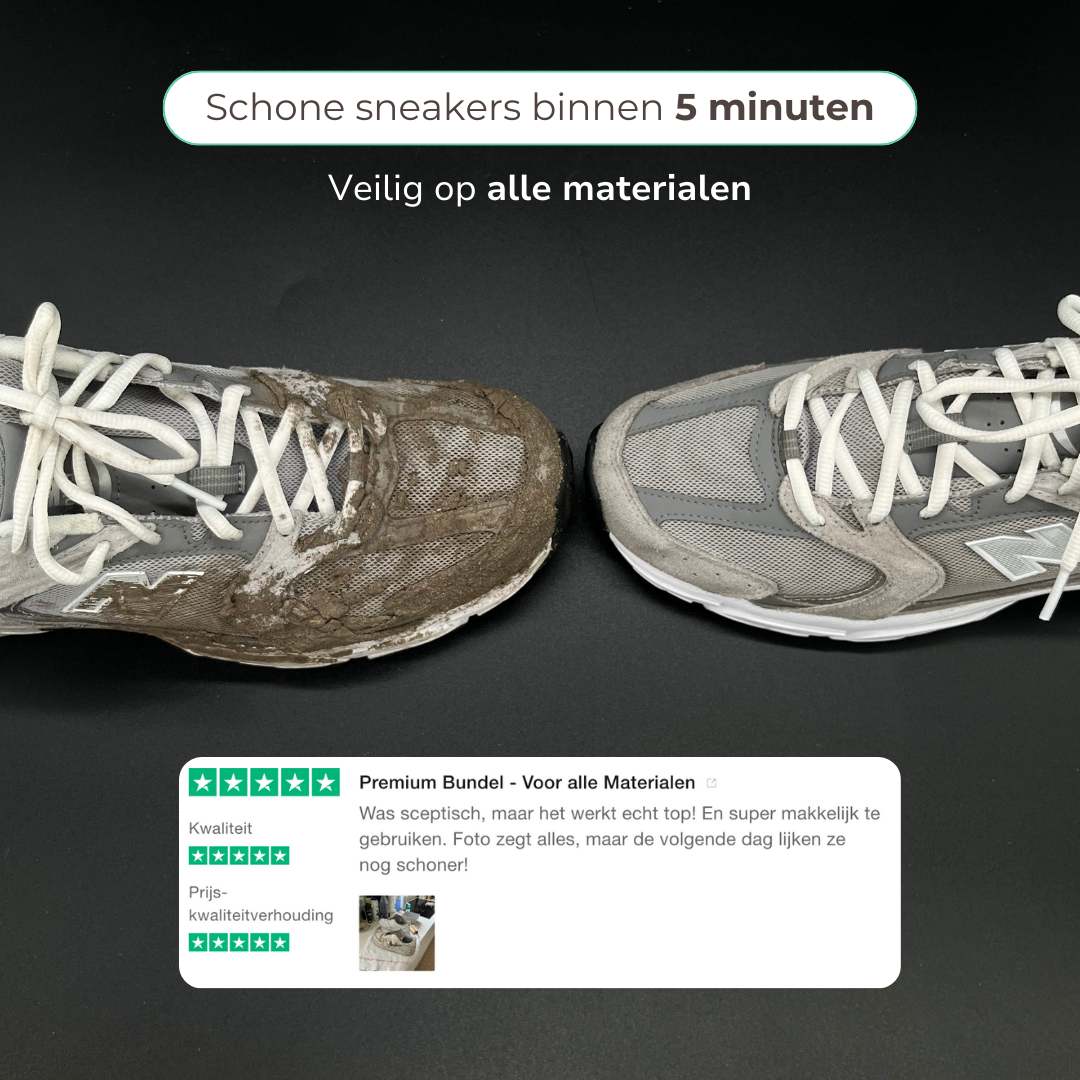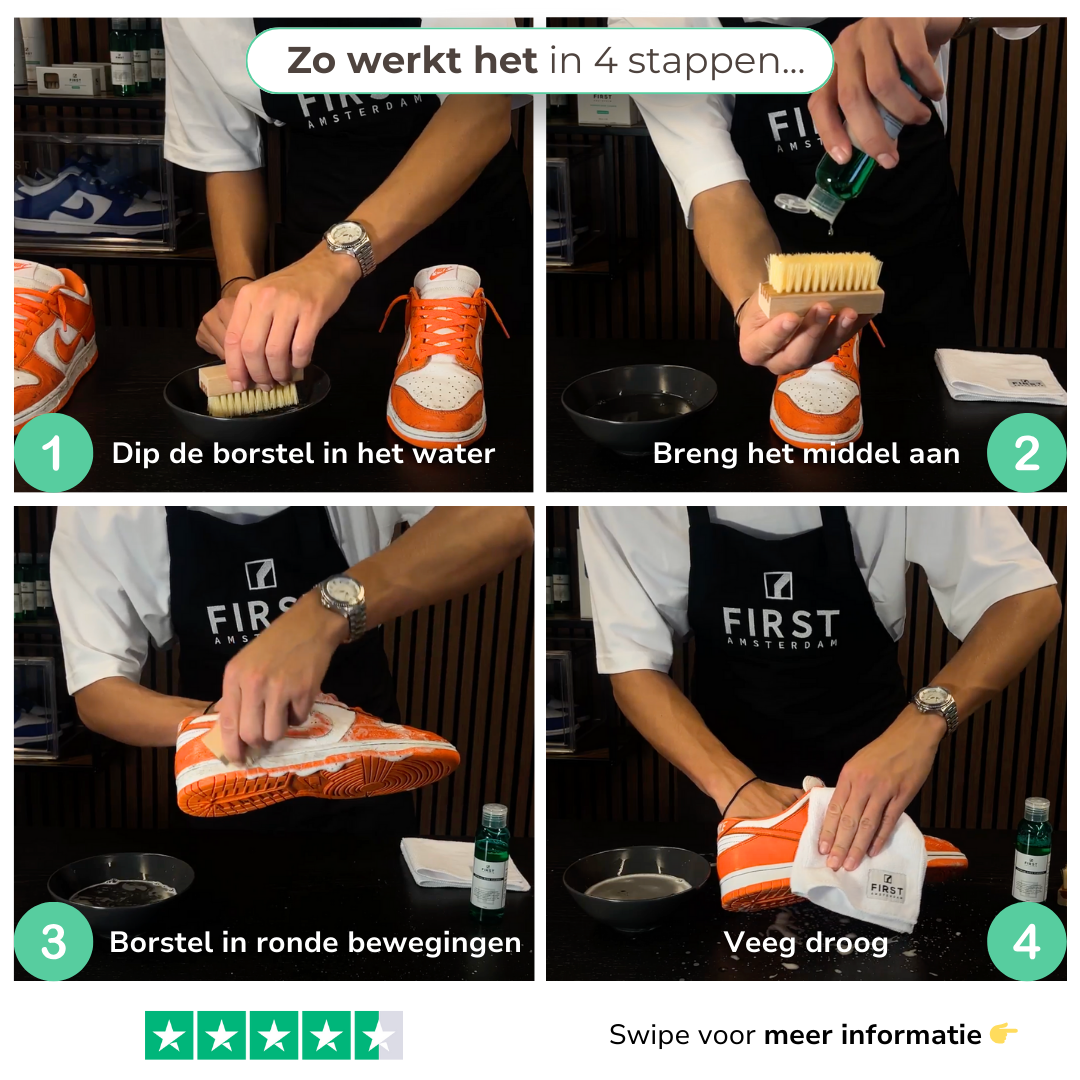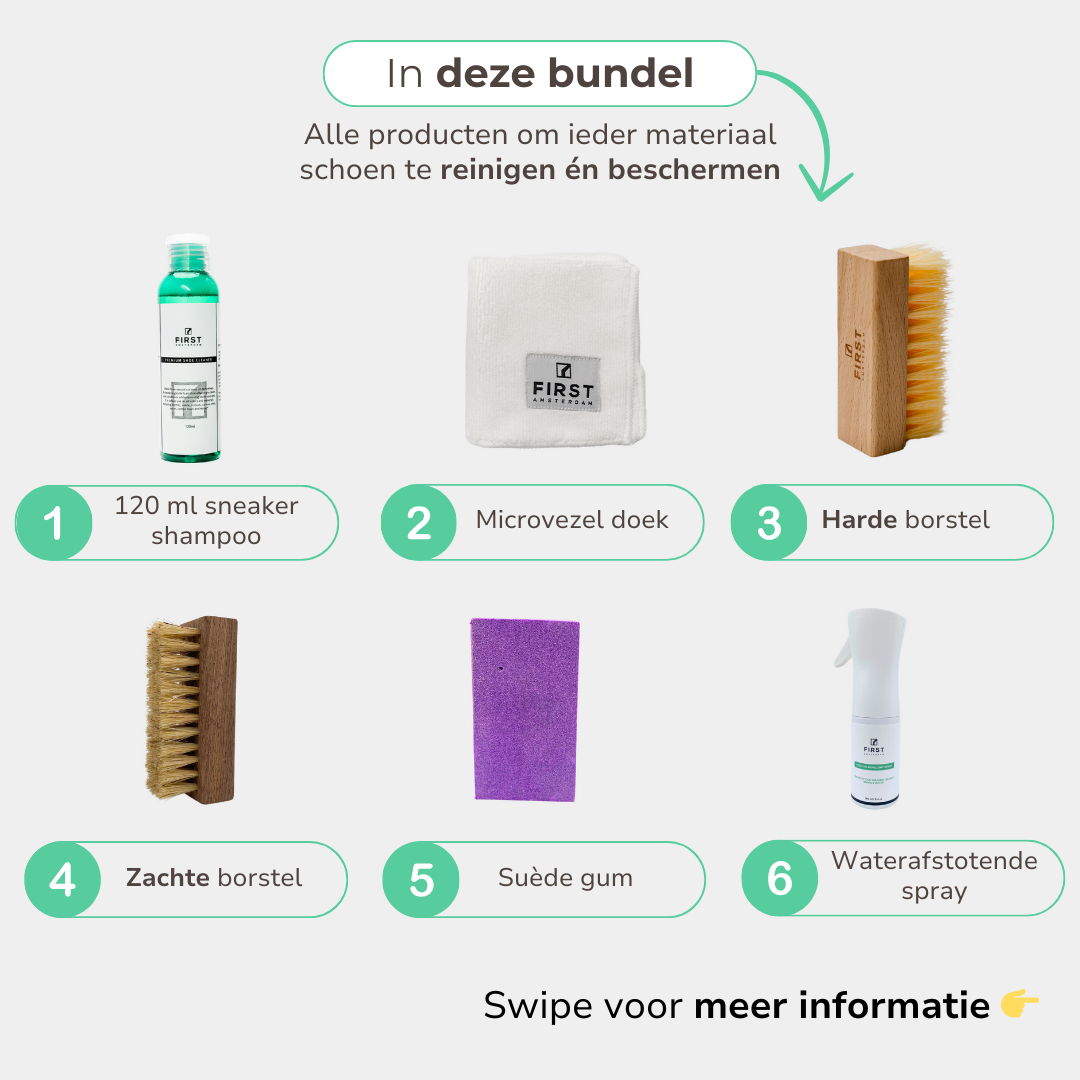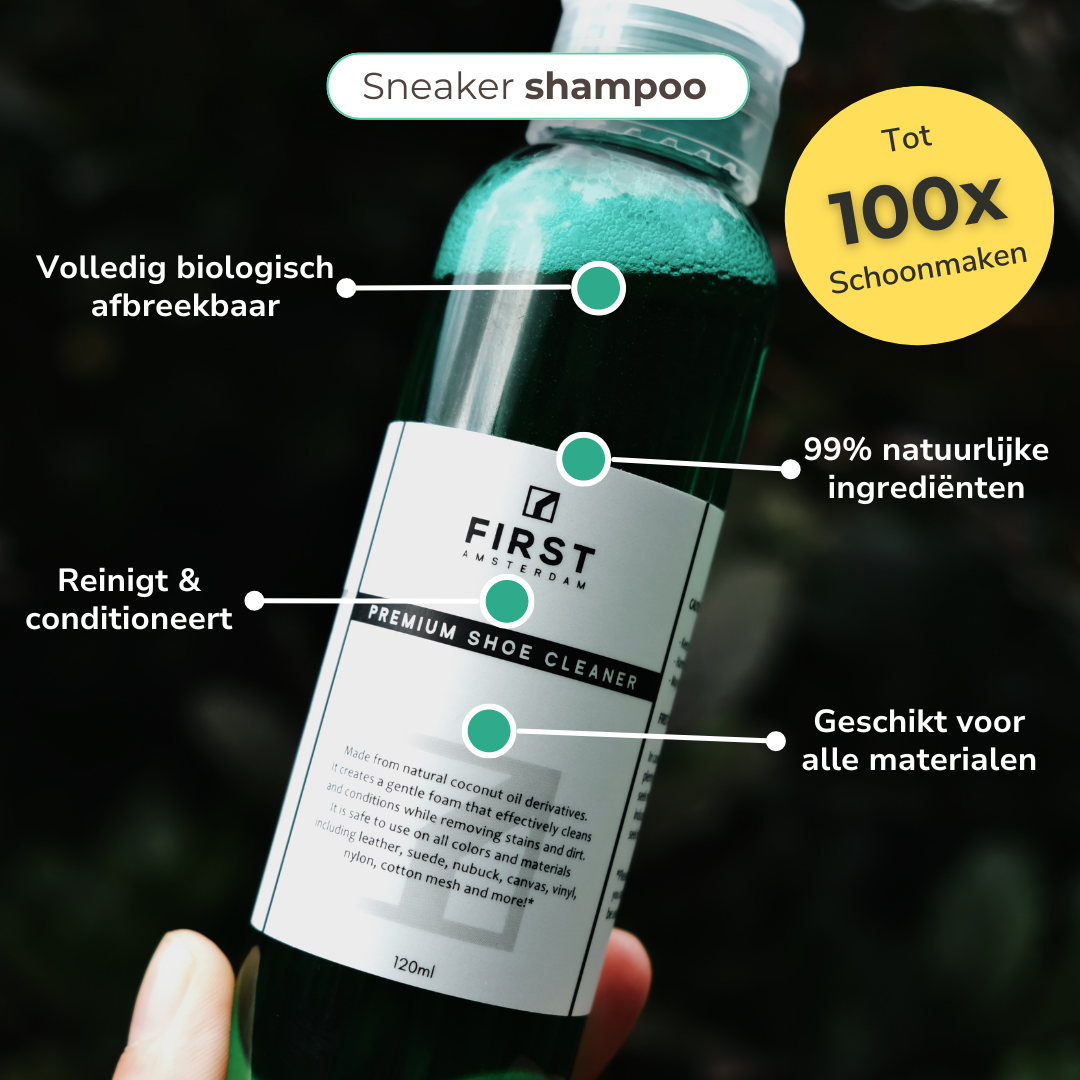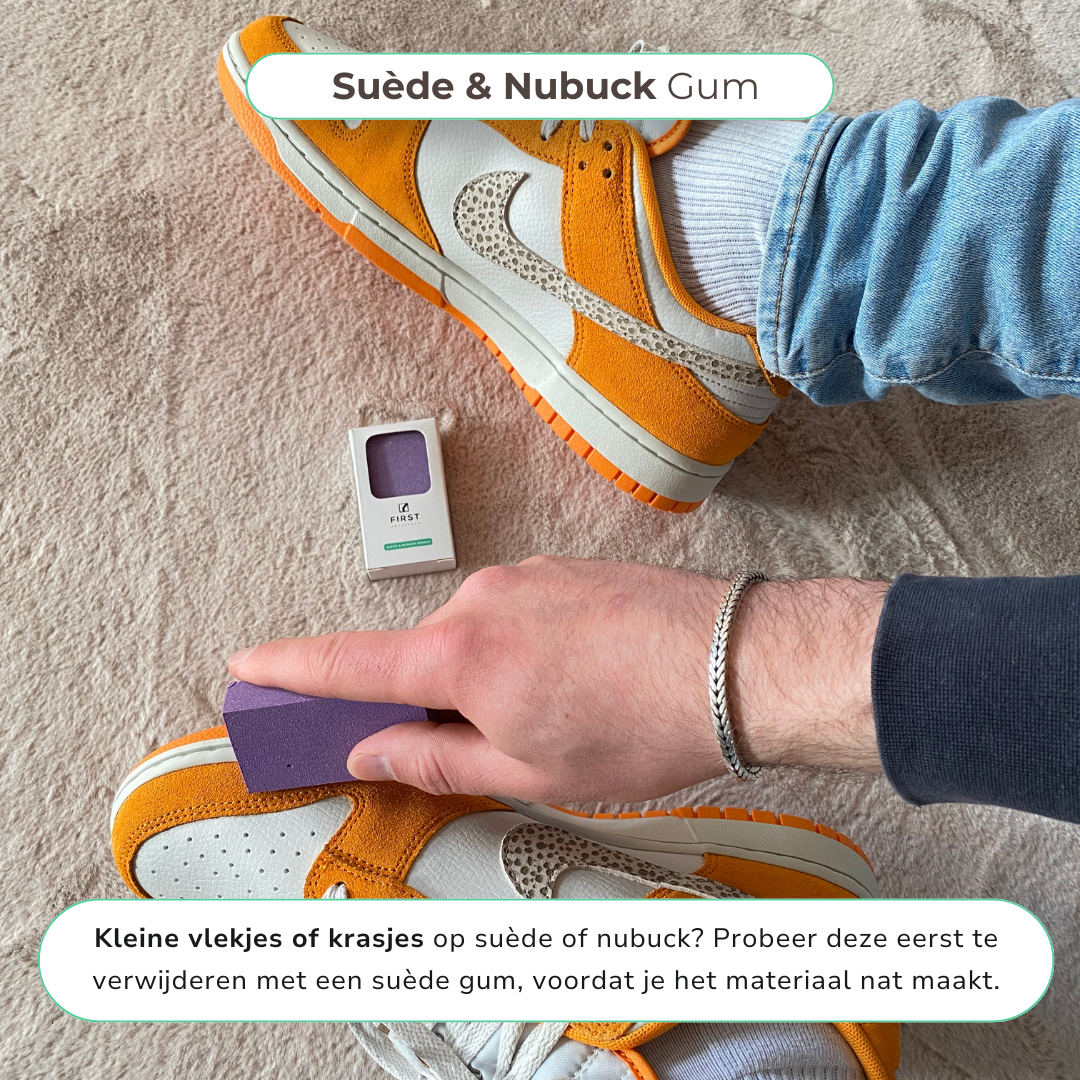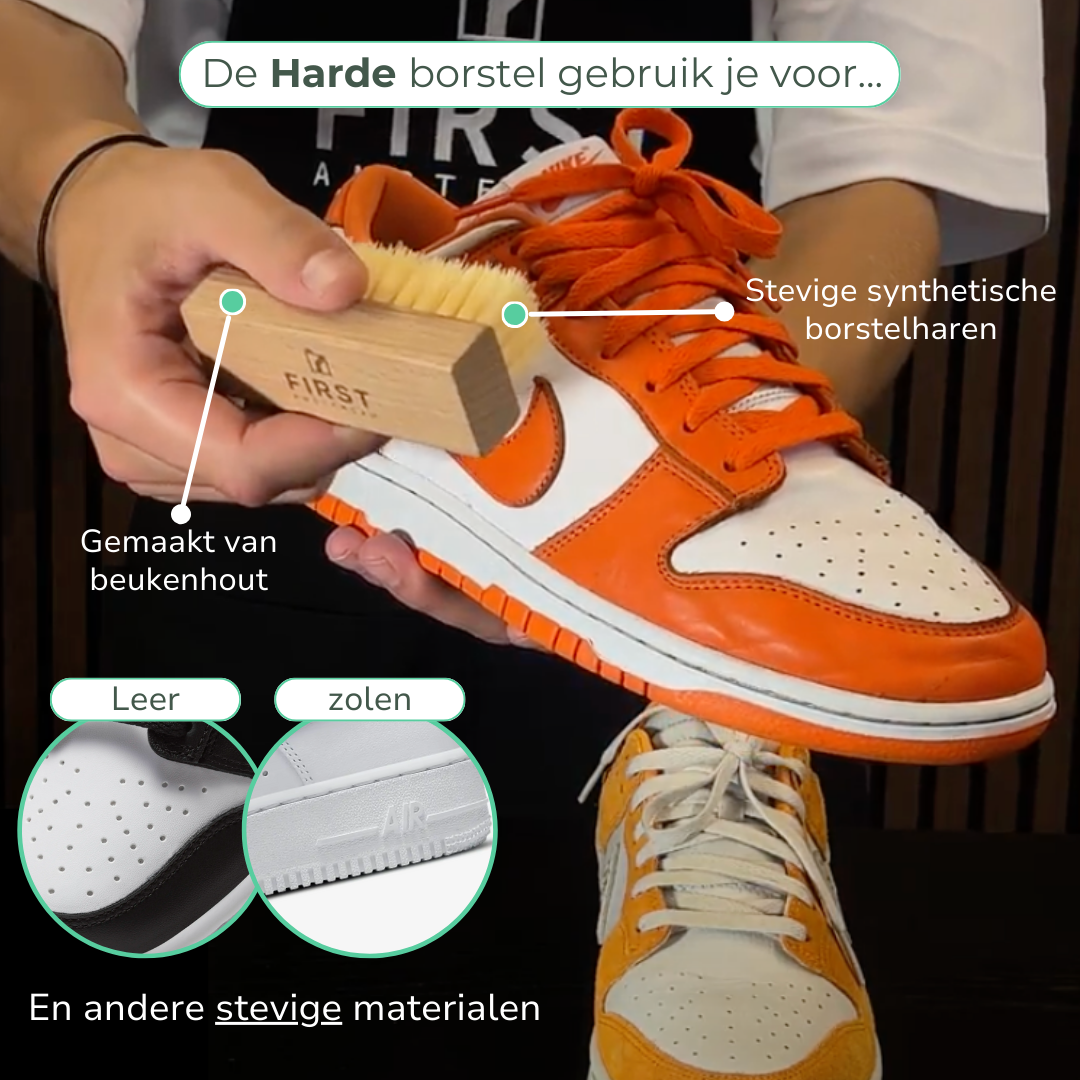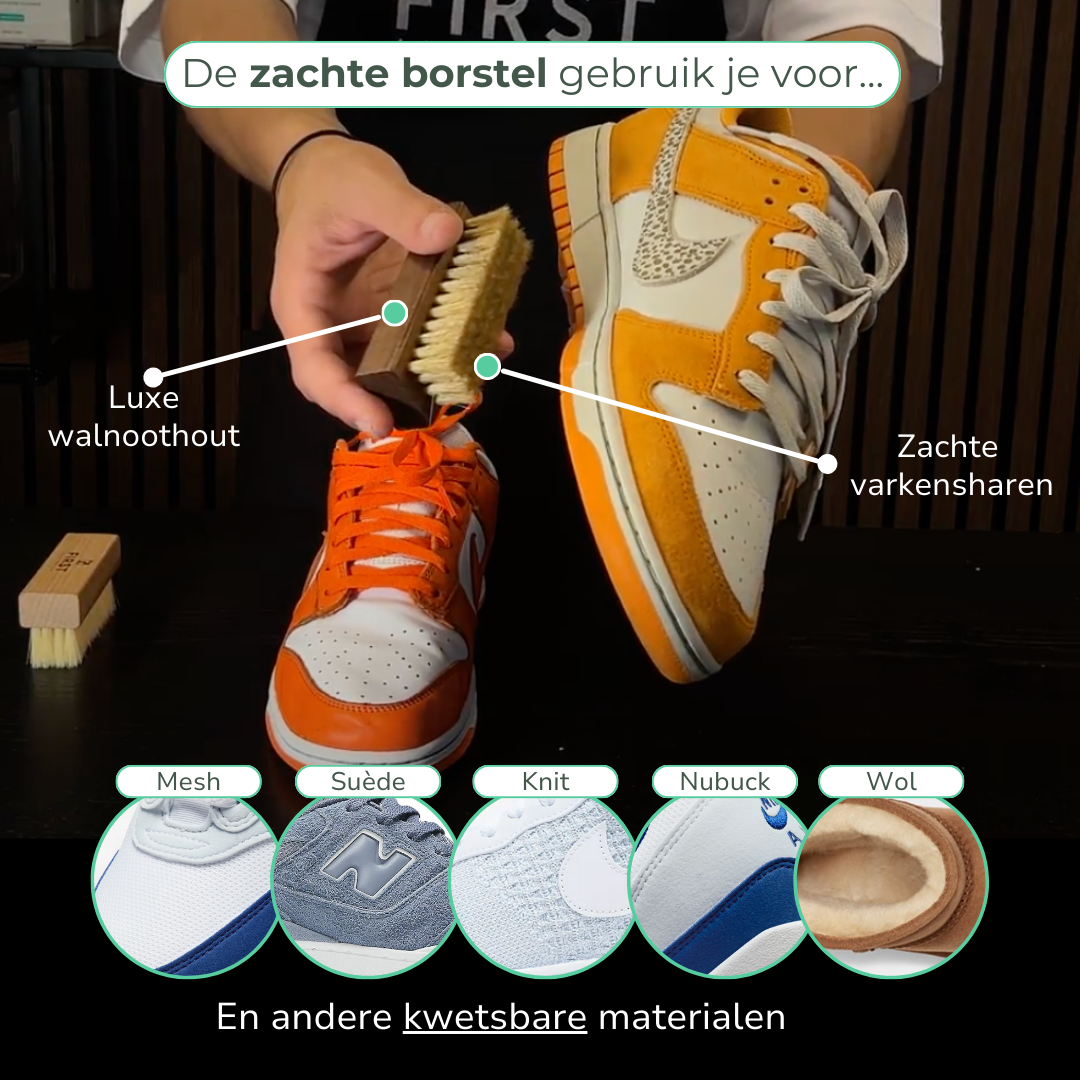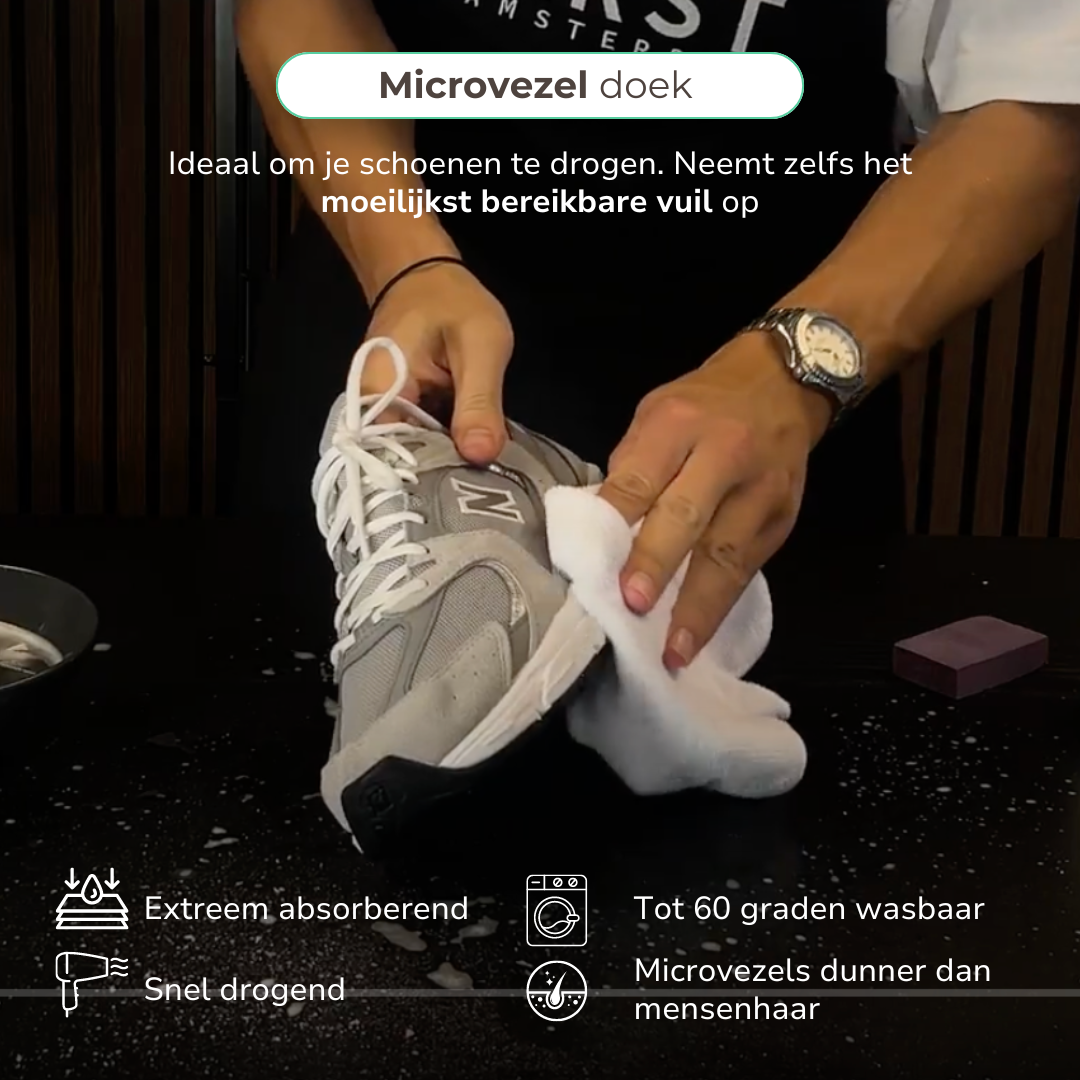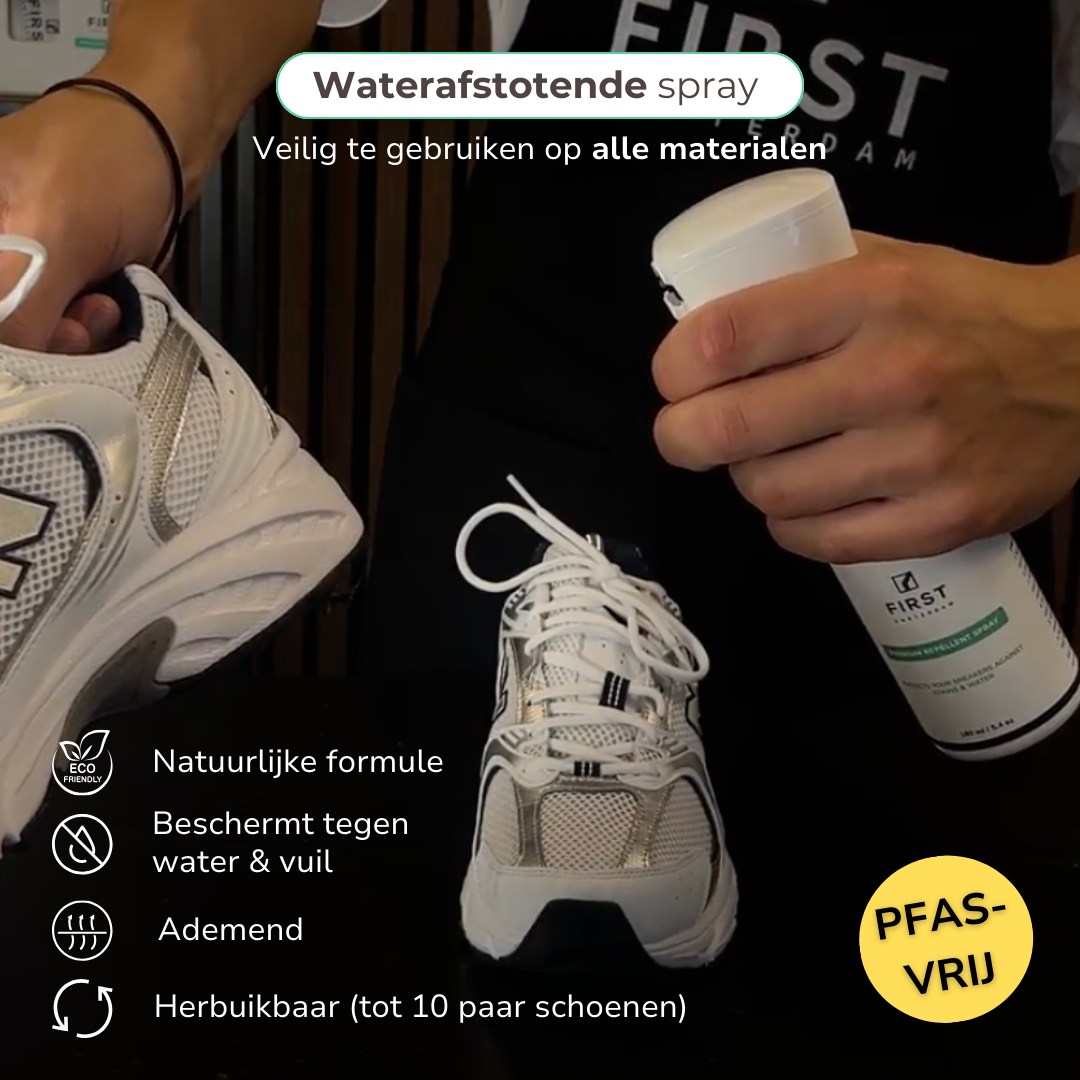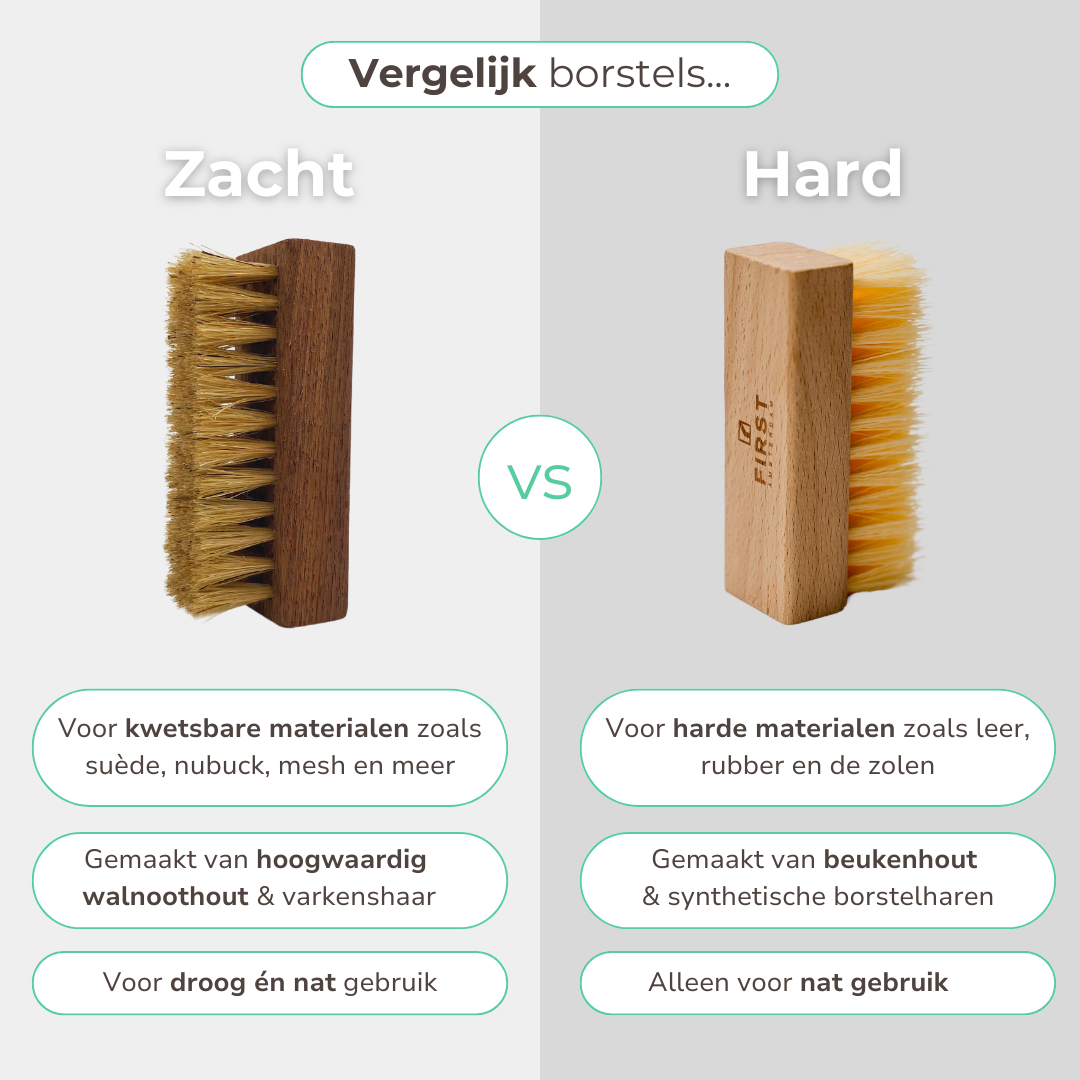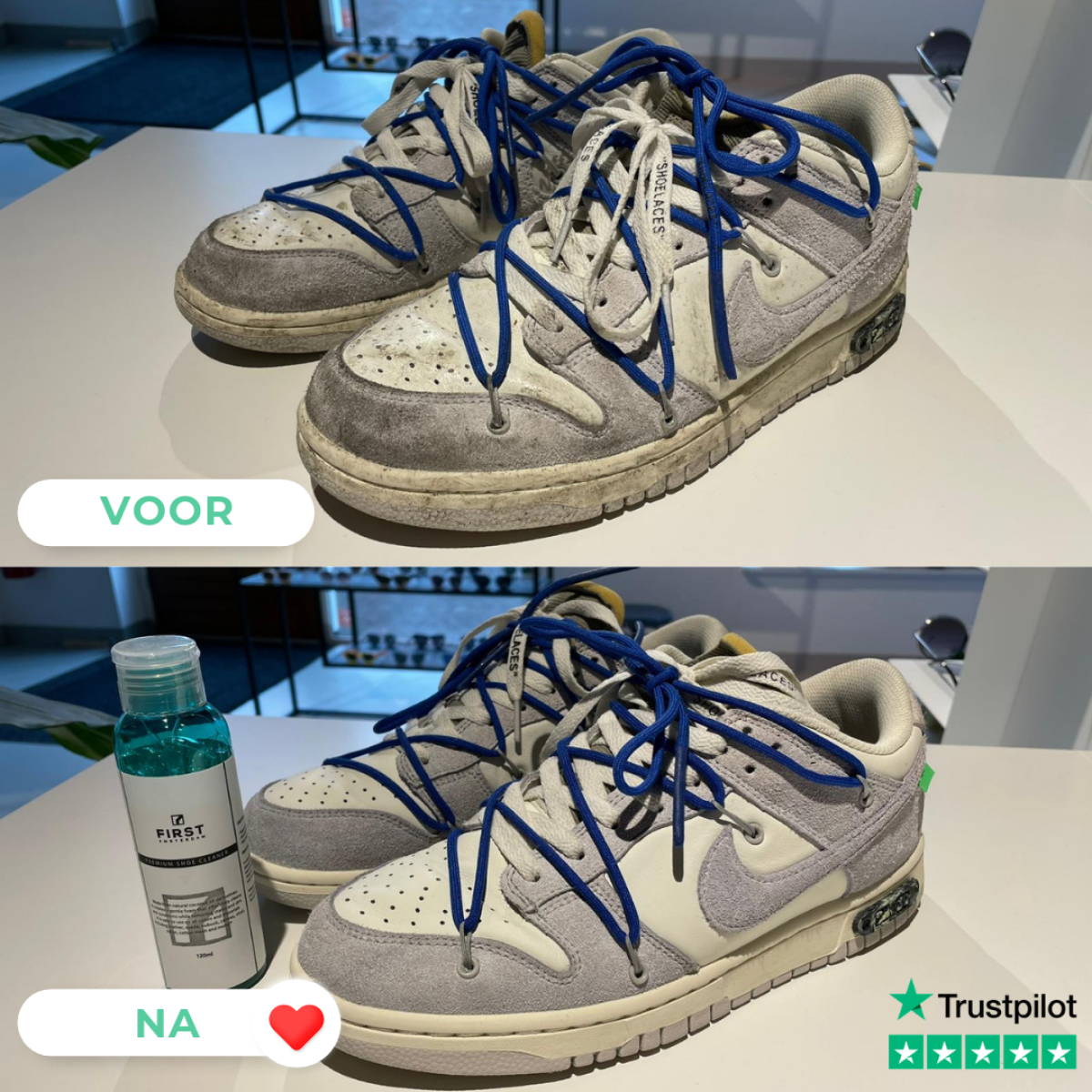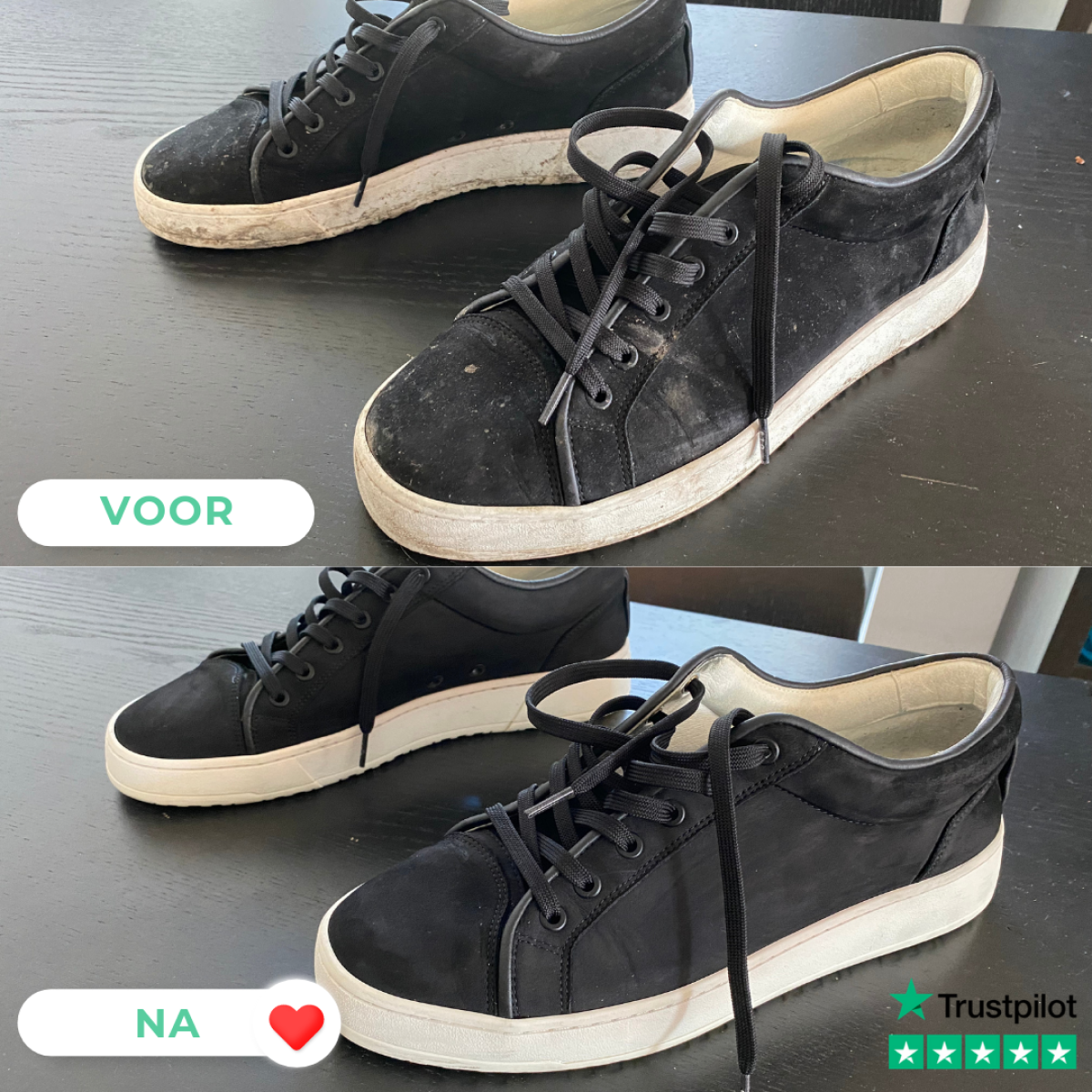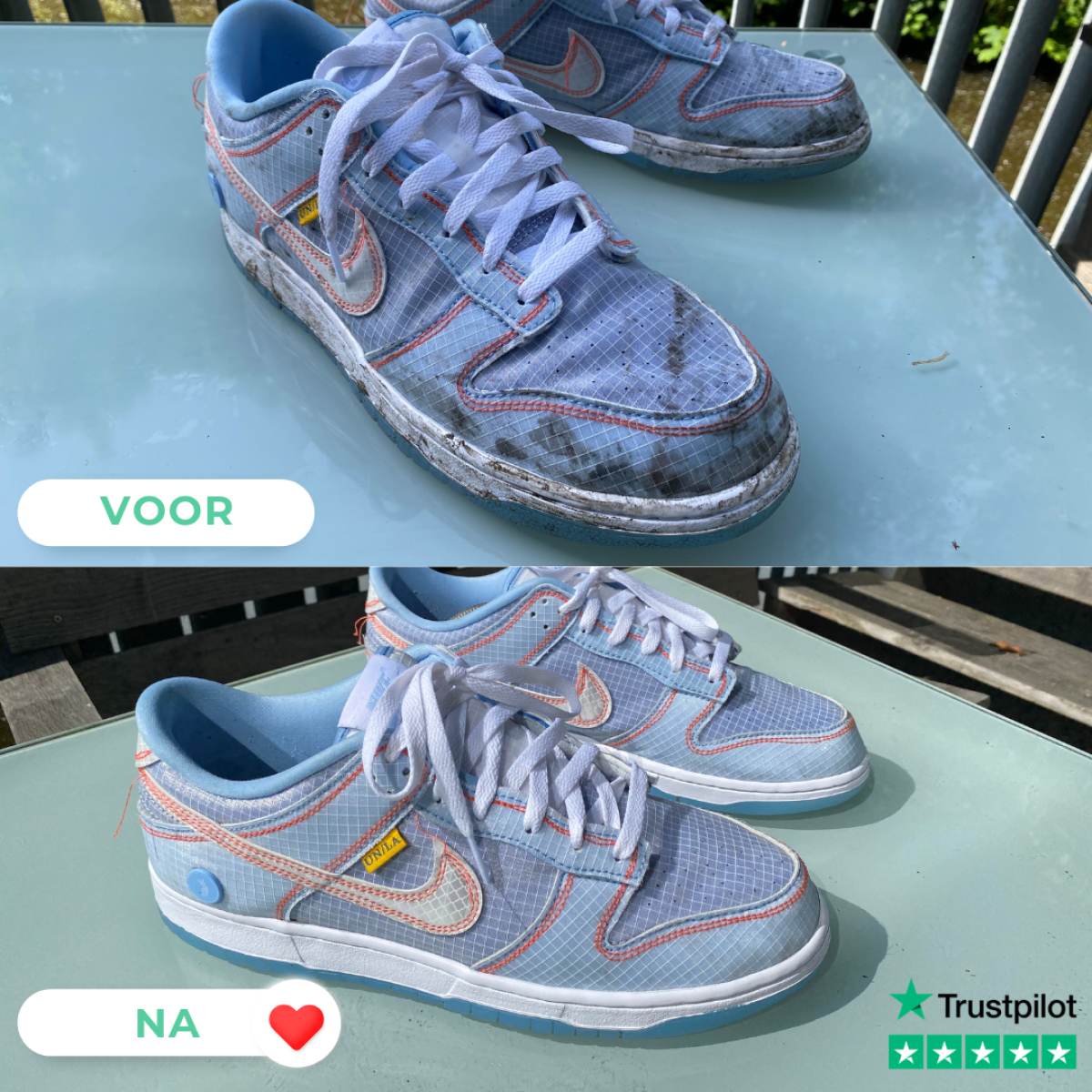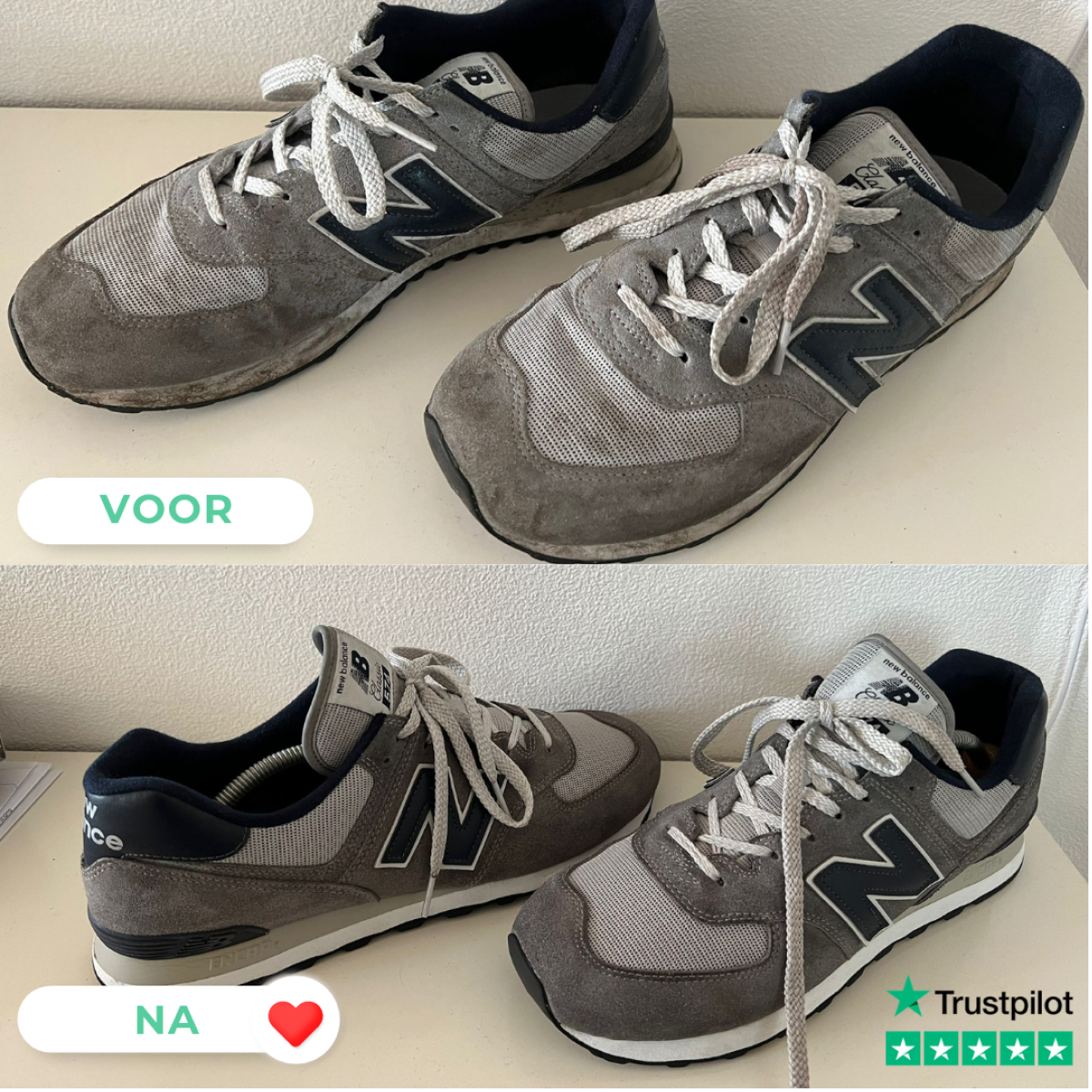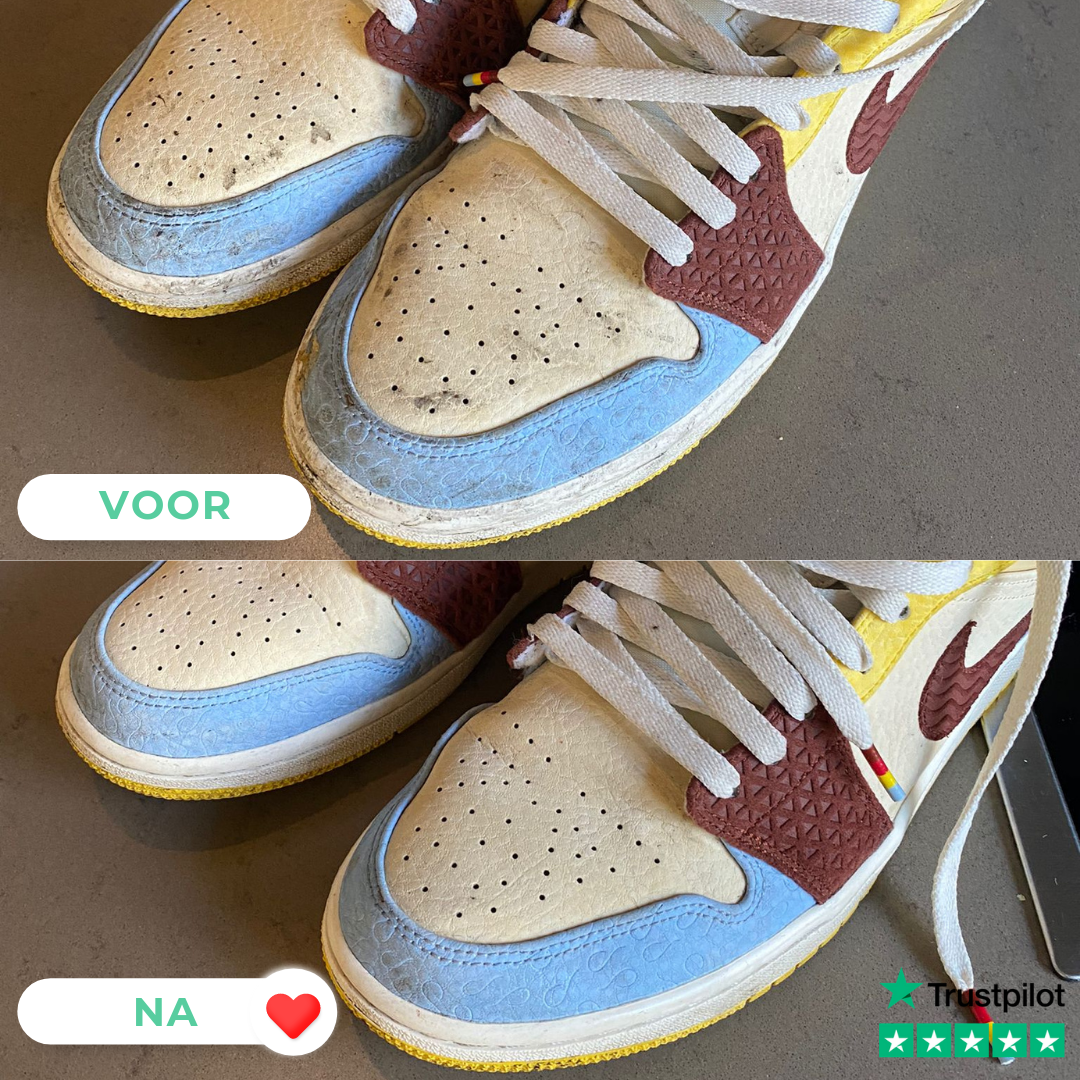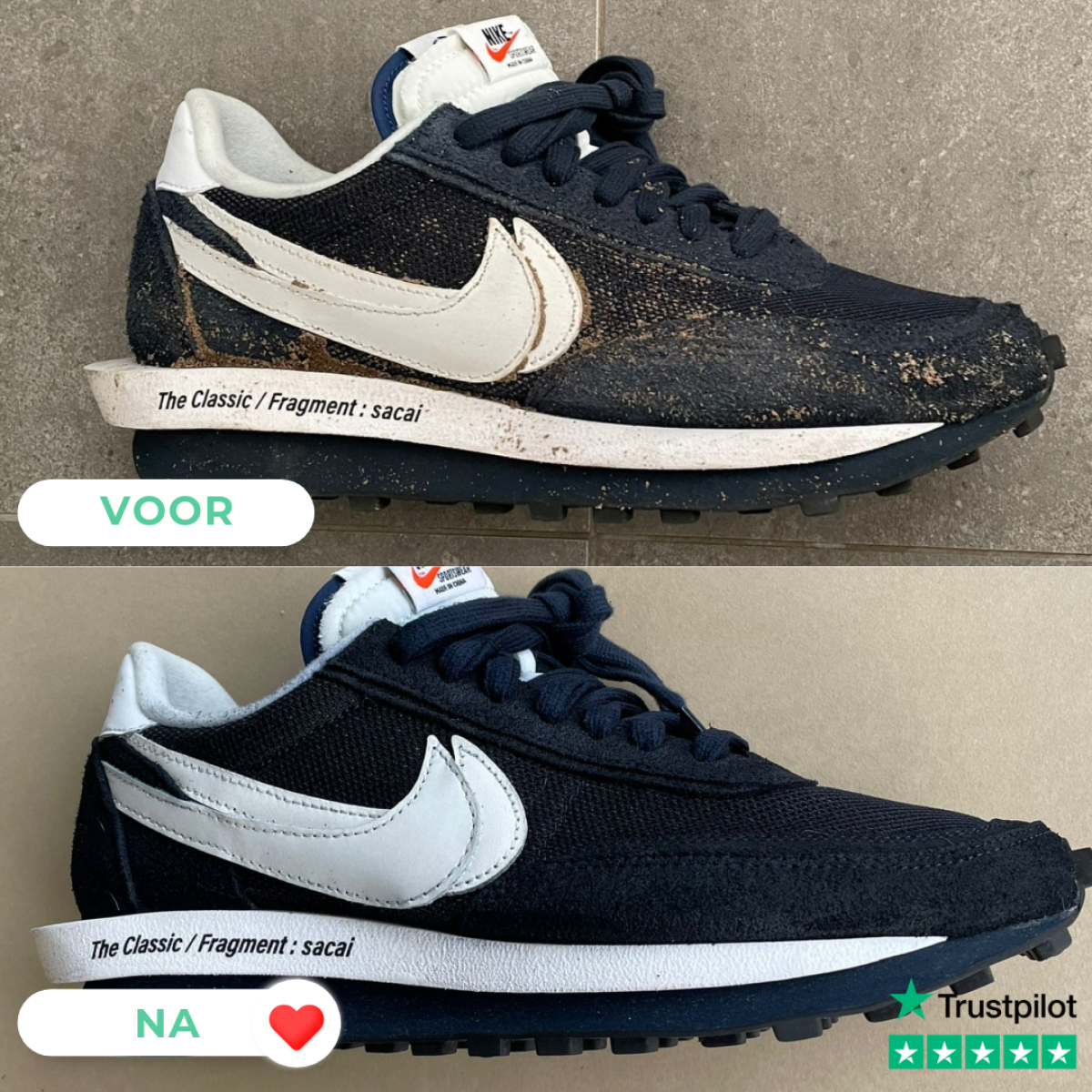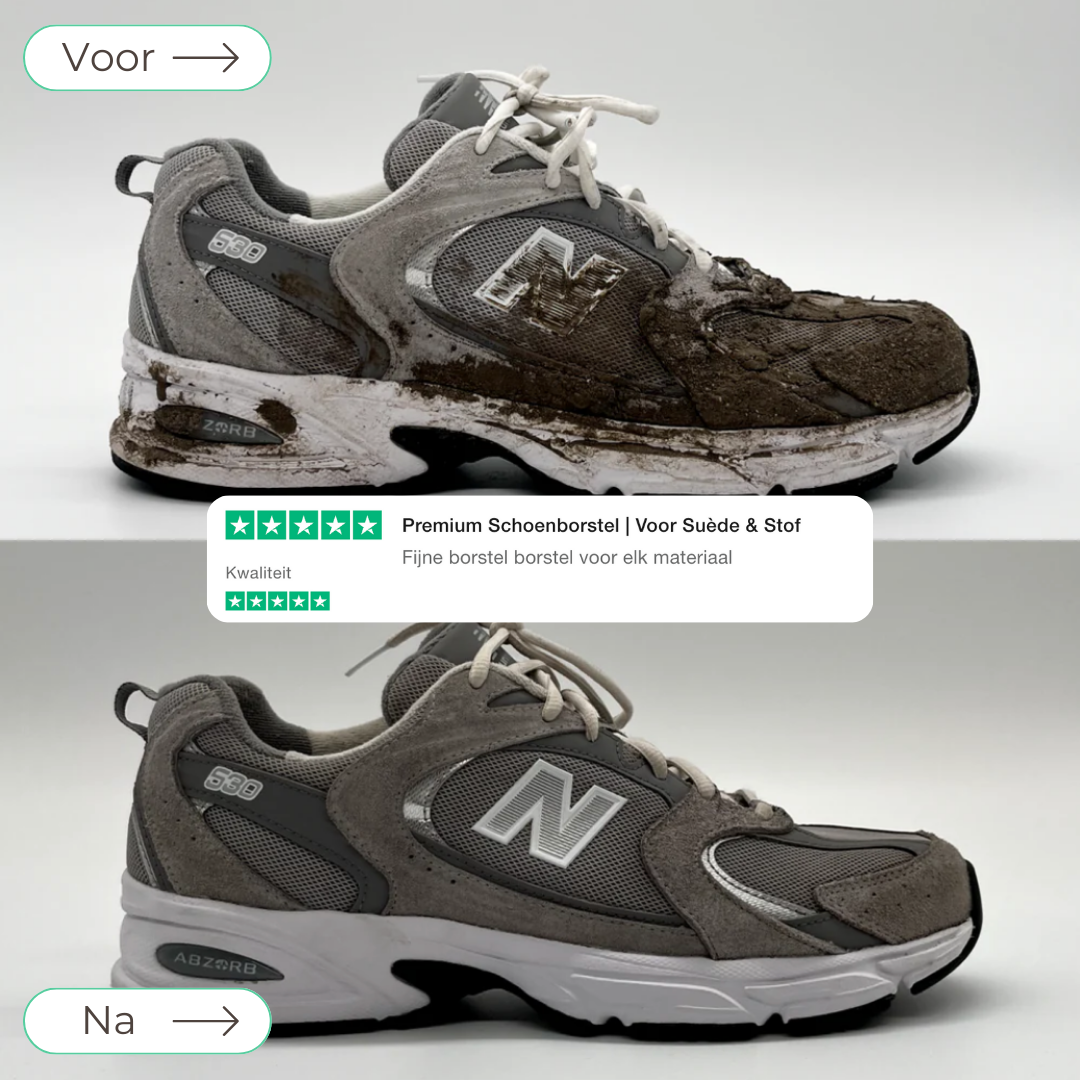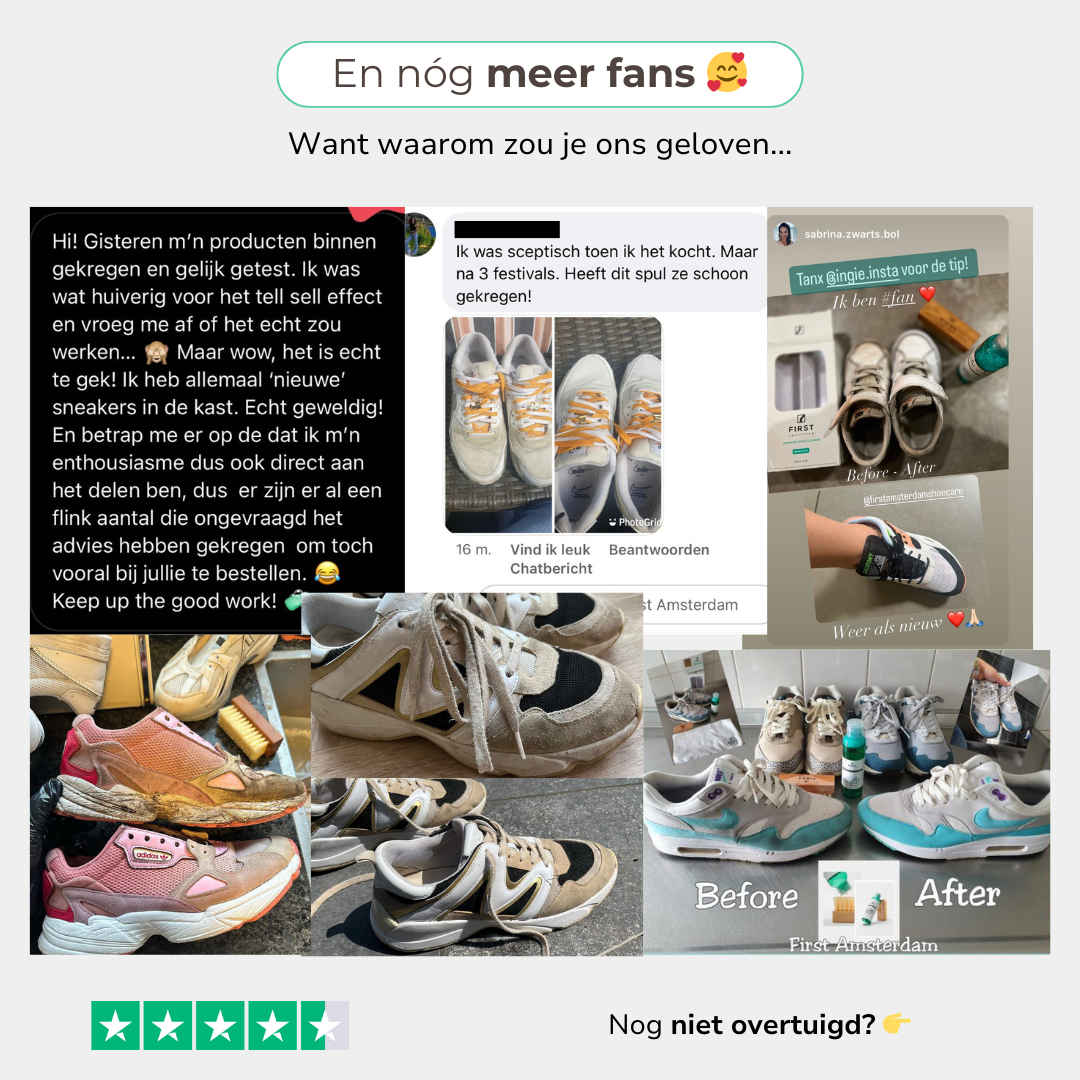This is how you clean mesh sneakers
Sneakers are rarely made of a single material, so it's essential to understand the care your shoes require. For a comprehensive series of cleaning tutorials, click here .

What you need to know when cleaning mesh sneakers:
The very best material for athletic shoes. Mesh is a super airy and breathable fabric, usually made of polyester or cotton. You can recognize it by its net-like pattern. This lightweight fabric is often used in combination with other materials and forms a large part of sneakers and athletic shoes. Mesh also forms the lining of many shoes.
Because it's a material with holes, stains can penetrate deeply and be difficult to remove. Therefore, it's wise to clean it immediately to prevent permanent stains. Because mesh is somewhat vulnerable to friction, it can fray or pill easily. Therefore, always use a soft brush.
White mesh can become a bit gray or yellow over time. Below you will find instructions for this. a solution:
How to clean mesh sneakers in 7 easy steps
- Preparation
- Brush dry
- Clean the lace
- Clean sole
- Clean mesh
- Let it dry
- Protect
1. Preparation: make sure you use the right products.
When cleaning mesh sneakers, it's crucial to use the right products. Avoid household products like green soap or dish soap, as these are less effective and can damage the material. Instead, opt for specially developed sneaker care products , such as those from First Amsterdam.
We also recommend using shoe trees to make cleaning easier and prevent the shoe from becoming misshapen. Always use a soft brush with mesh.
2. Brush dry: brush loose dirt from the sneaker
A good brush is essential to effectively remove loose dirt before you clean the shoe makes wet. We recommend always removing loose dirt with a soft brush, such as our premium brush .
Is there mud on the shoe? ? Then make sure that you remove as much of this as possible to avoid brushing it into the material during cleaning.
3. Clean the laces: remove the laces and clean them separately
Are your laces very dirty? Remove them from the shoe and soak them in a bowl of water containing a suitable sneaker cleaner, such as the specially developed cleaning formula from First Amsterdam. If they are very dirty or stained, apply a few more drops to the laces and rub them between your hands until they lather.
TIP: Run wet laces through a microfiber cloth to dry them faster and remove dirt.
Are your laces less dirty? Then you can also leave them in the shoe and clean them with a soft brush, a little water, and the cleaning formula .
TIP: Don't use a hard brush for this, as there's a good chance the laces will fluff up if they come into contact with these hard bristles.
4. Clean the sole: Clean the sole properly
Use a stiff brush and a good cleaning product to clean the soles, eliminating stubborn dirt. Don't apply too much pressure and let the bristles do the work.
If stains remain, add some cleaning solution to a microfiber cloth and rub it on the stain with your index finger to remove it.
5. Clean the mesh: then clean the shoe thoroughly
Dip the premium brush in the container of water, shake it well , and apply a few drops of the solution to the brush. Then, use a circular motion to clean the shoes. Dab with the microfiber cloth. Repeat until you achieve the desired result.
If the water is very dirty, replace it and repeat step 4. Again, use the soft brush when cleaning mesh. This way you can be sure that you have it material is not damaged.
6. Let dry: Let your shoes dry properly
After cleaning, dry the sneakers with a microfiber cloth . Let them air naturally for best results. It's best to leave the shoe trees in the shoes. Keep the shoes away from heat sources such as the sun or a radiator. This can cause the shoes to warp and/or discolor.
7. Protect: Use a water and dirt repellent spray to protect your sneakers.
Use a good water and dirt repellent spray to protect your shoes from unwanted stains and wear. Extend the life of your sneakers and keep them looking fresh!


